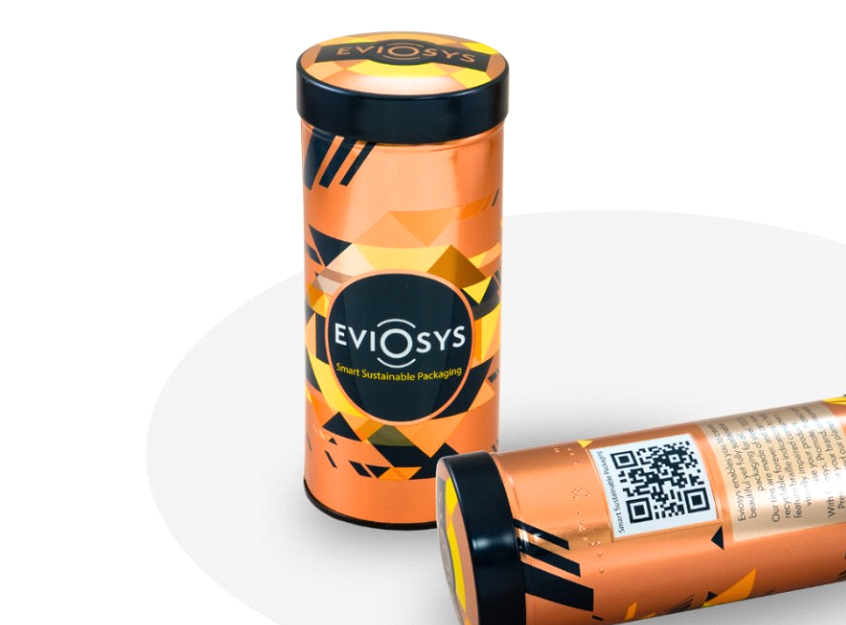In today’s world, technology has become a fundamental tool to make people’s lives easier. And more and more companies are making efforts to be inclusive and reach out to all consumers, including those with visual impairments.
In this sense, Braille microstamping has emerged as an innovative technique that allows direct communication with blind and low vision people. Through the use of raised dots in relief, this technology offers an effective means of conveying tactile information and making products and packaging accessible.
In this article we will explore how braille microstamping works, its advantages and market emphasis. Braille microstamping technology has revolutionized the way businesses can reach visually impaired consumers. By using this innovative technique, it is now possible to print embossed messages on surfaces such as food and beverage cans, allowing these people to read and identify the products themselves.
Braille microstamping works by creating small raised dots on a surface, following the tactile system of the Braille alphabet. These dots are strategically placed to form letters and numbers, allowing visually impaired people to read them by touch.
This technology offers numerous advantages for both businesses and consumers. On the one hand, it provides brands with an effective way to communicate with this specific market segment and show their commitment to inclusion. In addition, having the information available in Braille directly on the product packaging facilitates the shopping experience for the visually impaired.
On the other hand, consumers also benefit by being able to easily access all relevant information about a product without having to rely entirely on third parties or specialized mobile applications. This gives them greater autonomy and independence when making their daily purchases. Braille microstamping has potential applications beyond the food sector and can also be used in other products such as medicines or cosmetics. However, there are still significant challenges to overcome in order to achieve a massive and efficient implementation of this technology.
One of the main advantages of braille microstamping is its ability to make products accessible and inclusive. By incorporating the tactile writing system used by people who are blind or have low vision, it provides them with an additional way to access key product information.
In addition, this technology enables companies to comply with legal and ethical requirements related to accessibility. In many countries, there are laws and regulations that require products to be labeled correctly to ensure equal access for all consumers.
Another important advantage of braille microstamping is its durability and resistance to wear and tear. Thanks to advanced printing techniques, braille printed on packaging or labels has an extended shelf life, which is essential to ensure that it is legible throughout the product’s lifetime.
In addition, the use of braille microstamping can also be a differentiating factor and generate a positive image for brands. Showing a real commitment to inclusion can help build a strong reputation among socially conscious consumers and promote positive corporate values.
One of the most common applications of braille microstamping is its incorporation into product packaging and labels. Food and beverage cans are a perfect example of how this technology can be used to make information accessible to everyone. Thanks to microstamping, blind people can easily identify the contents of a can without the need for external assistance. One of the companies that have already bet is Eviosys, with a micro-relief that says ‘Scan me’ in braille and in conjunction with a QR code, brands can offer an inclusive shopping and user experience with product information, recommendations, allergen indication, help network and automatic audio notifications.
One of the main challenges is affordability. The braille microstamping process can be costly, which could limit its mass adoption by companies. More efficient and cost-effective ways of producing braille packaging need to be found to make it affordable for both large corporations and small businesses.
Another important challenge is Braille awareness and education. Despite widespread recognition of tactile language, many people still do not know how to read or interpret it correctly. Promoting Braille literacy and fostering greater understanding among the population are key steps to ensure that Braille microstamping is truly effective and useful.
In addition, there is a logistical challenge related to the mass production and distribution of packaging with braille microstamping. Manufacturing plants need to adapt and invest in machinery capable of performing this specific type of specialized printing. In addition, a proper logistics chain is required to ensure that these products reach the final consumer’s hands without any problems.
In conclusion, braille microstamping technology has proven to be an invaluable tool for reaching visually impaired consumers. On the other hand, brands using this technology benefit by expanding their target market and demonstrating their commitment to equality and diversity.
However, the widespread use of braille microstamping still faces significant challenges. The initial investment can be high and many companies are not familiar with this technology. In addition, it is necessary to ensure that the size of the text is adequately legible to the touch and to guarantee that it remains intact throughout the logistics process.
Visual impairment and blindness affect 2.2 billion consumers around the world. According to the World Health Organization In 2022, Eviosys invested in a new printing press to scale the ability to write instructions in braille with microstamping technology.












